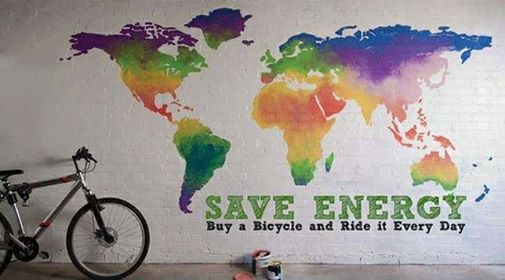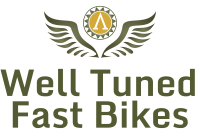
As the oil crunch becomes more pronounced, Americans are looking for more ways to save energy, and more to the point, gas.
Bicycles, always a popular mode of transportation in Europe and other parts of the world, are becoming more and more ubiquitous in the United States.
The very first bicycle ever is reputed to be the Draisienne, invented in Germany by Baron Von Drais. It was made almost all of wood and was operated by pushing one’s feet against the ground.
Bicycles since then have evolved into carefully designed high tech machinery utilizing lightweight metallurgy and ergonomic designs that cater to the older American as well as children and everyone in between.
Buying a bicycle today can be an exercise in frustration and riding one in traffic an even more fearful event, especially for those Americans who haven’t straddled one since their youth.
Seek the advice of your local bicycle dealer as to what type of bicycle best suits you and your needs. While street, or touring, bicycles look sleek and fast, they can be uncomfortable for older bicyclists. Cruisers like Electras, http://www.electrabike.com/ are usually single speed ( although some models have more than one) bicycles with larger, more comfortable seats, more widely spaced handlebars that allow the rider to sit more upright, and fatter tires all of which combine to provide a slower, more comfortable ride. There are specialty bicycles available, as well, like mountain bikes that are usually not used in commuting or traveling around towns.
Becoming familiar with your bicycle and how to maintain it will help you become confident with your equipment and becoming familiar with your own local regulations governing bicycles will help to alleviate those fears and instill a sense of confidence so necessary to navigating on a bike.
Many municipalities have their own regulations regarding bicycles but there are a few common sense rules every bicycle rider should know.
- To wear a helmet or not to wear one: Certain municipalities require bicycle riders to wear a helmet. Various helmets come with a small mirror attached which aids in monitoring traffic approaching from behind. You can purchase a mirror that attaches to your handlebars and serves the same function. Certainly, wearing a helmet is a valid safety measure.
- Wear clothing appropriate for bicycle riding. Obviously, loose flapping clothes are likely to get caught in the chain or, at the least, inhibit safe and proper operation of the bicycle. While it isn’t necessary to purchase the tight-fitting bicycle pants and shirts many riders wear, many people find that type of clothing adds to the comfort of riding a bicycle.
- Ride on the right side of the roadway, or on a provided bicycle path. Beware of riding in the blind spot of traffic, however. If you can’t see the driver, chances are he or she cannot see you either.
- Ride with the flow of traffic, not against it.
- Give way to traffic. If you are riding on the right side of the roadway, be aware of traffic turning to the right. Whether they signal or not, give them plenty of room. Bicyclists never win in a confrontation with an automobile. Automobiles and trucks cannot stop nearly as quickly as a bicyclist can.
- Ride at the proper speed for the conditions. If it is raining, your stopping distance will be longer and the roadway slippery so you should slow down. Dirt and gravel are much more unstable than pavement to ride on and call for slower speeds, as well. If traffic is heavy or traveling faster than you can, move over to the right, stop, and wait for the traffic to pass or move as far right as you can and slow down before continuing. Remember, even though regulations require drivers to yield to bicyclists, no bicyclist ever wins in a contest with a car even though the cyclist may be in the right. Give way to them for your own safety. Better to give way and live than to be right and dead or injured.
- Park your bicycle off roadways and bicycle paths. Be sure to lock it securely with a bicycle chain and lock. Don’t park your bicycle against a building or lock it to one or to a movable object like an automobile or truck.
- Never hitch a ride by fastening your bicycle to a vehicle or another bicycle.
- Follow all local and state traffic rules. Bicyclists aren’t excluded from following all traffic rules including those in towns or on local, county, state, or Federal highways. Obey all traffic signals. Learn to use hand signals which are the same as for automobiles. (Remember: left hand out and down, palm rearward for ‘Stop’; Left arm straight out for ‘left turn’; Left arm out and up for ‘right turn’. Always signal before you reach the intersection. Don’t wait until you get in the intersection to signal and remember, signaling means you will have one hand off the handlebars. Make sure you have practiced that skill until you are proficient at keeping your bicycle under control with one hand on the handlebars.
- Don’t ride between lanes of traffic even though it seems there is enough room. Someone may open their door unexpectedly and you may run into it.
- Yield to all pedestrians.
- Certain municipalities allow bicyclists to ride on the sidewalks. If yours does, be sure to yield to oncoming pedestrians and use a bell or horn to give a warning to pedestrians you are following as you approach and pass them.
- Keep your warning lights and horn in good operating order and use them where necessary to notify traffic and pedestrians as to your presence.
- At night, make sure your front and rear warning lights and reflectors are clean and functioning properly. Use light colored clothing and a reflector vest so drivers can see you.
The Bicycle Institute of America claims that there are over 4 million people who ride bicycles to work in the United States. They also state that bicycle ridership increases 10% each year in the U.S. Be a part of that growing number that have discovered how to gain good health, save money, save energy, and save the aggravation of commuting in heavy traffic. Buy and ride a bicycle.
Take a bite out of the energy crunch! Ride a bike every day.
